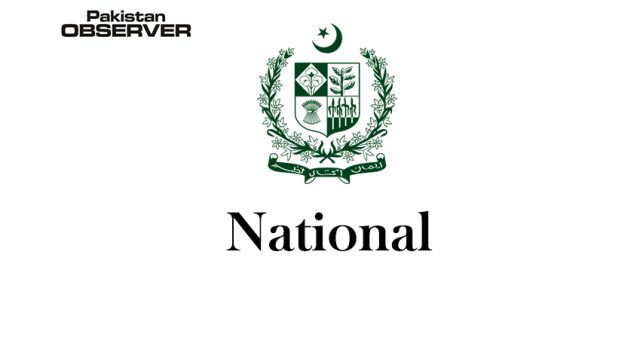S.M. Hali
PAKISTAN Navy (PN), which has been entrusted with the sacred task of defending Pakistan’s maritime frontiers, has recently inducted a state-of-the-art 2300 Tons Corvette Pakistan Navy Ship (PNS) Yarmook. The corvette is the first of two manufactured by the Dutch ship manufacturing company M/s Damen Shipyards, which built the corvette at its yard in Galati in Romania.
M/s Damen signed the contract with Pakistan’s Ministry of Defence Production for two multipurpose Offshore Petrol Vessels (OPV), for PN on 30th June 2017 following a tender process. The facility has built nearly 40 vessels for the defence and security division, including the last seven complex naval vessels for the Royal Netherlands Navy and the Stefan cel Mare offshore patrol vessel, the flagship of the Romanian Border Police.
PNS Yarmook is a state-of-the-art electronic warfare, anti-ship and anti-submarine warfare platform with cutting edge self-protection and terminal defence systems. M/s Damen will deliver the Second vessel PNS Tabuk (Designate) in May this year. PNS Yarmook is capable of performing a variety of maritime operations and can transport both a helicopter and an Unmanned Aerial Vehicle (UAV). The ship can also launch two high speed Rigid Hull Inflatable boats (RHIB) simultaneously and also has the capability to accommodate two 20-foot-long containers for special mission-based operations.
Vessels in PN are named after historical figures or names. PNS Yarmook has been named to commemorate the Battle of Yarmook between the Muslim Army led by Khalid bin Waleed and the Byzantine army led by Theodore Trithyrius in 636 AD. The Muslim victory routed the Byzantine Empire in Syria.
PN, which made a humble start with Pakistan’s Independence on 14 August 1947, has become a combat ready multi-dimensional force manned by highly motivated and professionally competent human resource imbued with unwavering faith in the Almighty and national cause. It contributes effectively to credible deterrence, national security and maritime economy, safeguarding Pakistan’s maritime interests while radiating influence in the region with global outlook.
Corvettes are small ships; whose forerunner was the sloop. The role of the corvette initially consisted mostly of coastal patrol, fighting minor wars, supporting large fleets, or participating in show-the-flag missions. The modern corvette appeared during World War II as an easily built patrol and convoy escort vessel. Modern navies began a trend in the late 20th and early 21st centuries towards smaller more maneuverable surface capability. Corvettes have a displacement between 500 and 3,000 long tons and measure 180–420 ft (55–128 m) in length. They are usually armed with medium- and small-caliber guns, surface-to-surface and surface-to-air missiles and anti-submarine weapons. Modern corvettes can accommodate a small or medium anti-submarine warfare helicopter. Indian Navy operates four Kamorta-class corvettes.
Pakistan Navy, despite being the smallest service in Pakistan, is responsible for the most onerous task of protecting maritime interests of Pakistan, deter aggression at and from sea, provide disaster relief, participate in development of coastal communities and contribute to international efforts in maintaining good order at sea and keeping the Sea Lines of Communication (SLOC).
Not withstanding the fact that some land lubbers ruling Pakistan did not appreciate the role of a maritime force and even considered downsizing it, PN has given a good account of itself in the 1965 Pakistan-India War, in which the sole PN Submarine Ghazi kept the Indian Navy at bay while PN surface fleets pounded the Indian Naval port of Dwarka. It is ironic that Indian Naval strategist K.M. Panikkar, in his 1951publication India and the Indian Ocean: An Essay on the Influence of Sea Power on Indian History, had visualized that Pakistan will have two navies, one for the defence of West and the other for East Pakistan. Had we heeded this pearl of wisdom, we would have avoided the naval blockade of East Pakistan in 1971, which sealed the fate of our eastern wing.
Luckily, later dispensations in the corridors of power in Islamabad, gave due importance to the Naval arm of the armed forces of Pakistan. Thus, PN has been able to build a modest force comprising surface, sub-surface and aerial complements. Nature has endowed Pakistan with huge maritime potentials and there is a dire need to explore and tap these resources. PN’s responsibility has multiplied manifold by the expansion of Pakistan’s Exclusive Economic Zone (EEZ) till 350 Nautical Miles from Pakistan’s Coast i.e. Extended Continental Shelf. Additionally, with the advent of the China Pakistan Economic Corridor (CPEC), development of strategic deep-sea port of Gwadar and the onset of maritime terrorism, PN has been taking its responsibilities safeguarding the maritime frontiers diligently.
It is praiseworthy that besides guarding the maritime frontiers of Pakistan, PN has picked up the cudgel to conduct peacetime missions comprising hydrography and bathometry. To exploit the rich undersea resources, Pakistan recently inducted PNSV BEHR MASAH to undertake hydrographic, oceanographic and geographical surveys as well as seafloor mapping from shallow to ocean depths. It is expected that PNS Yarmook, and later Tabuk, will act as force multipliers in enhancing PN’s capabilities of safeguarding Pakistan’s maritime frontiers and will offer more flexibility in conducting regional maritime security patrols in the Indian Ocean.









